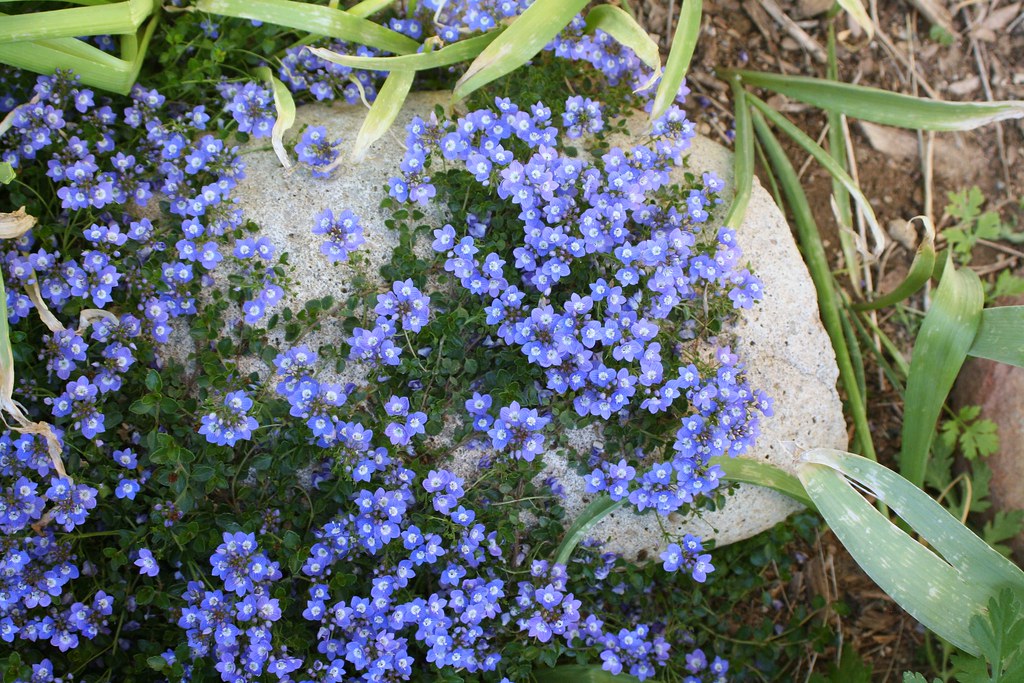Attractive Low Maintenance Ground Cover Plants For Landscaping

Do you want to add something attractive and easy to care for in your garden? Well, trying some low-maintenance ground cover plants can help you with this need.
The turf lawn types of grasses are one of the most popular options for the ground cover plants in the landscaping ideas. However, sometimes the grass is not something that is practical to add on, maybe due to the condition of the site or the maintenance they require. Fortunately, the good thing is that there are a number of low-maintenance ground cover plants which you can choose for your garden.
In the article, we have compiled together a list of some of the most attractive and low-maintenance ground cover plants.
How Do We Choose The Plants?
The plants which we have put together in the list are selected on the basis of various criteria like:
- The plant must be a type of vigorous enough grower that can fill an entire landscape area which you need to dress up.
- It must be able to keep down the weeds in the area.
- The plant must not be vigorous to the extent that it becomes a problem for other plants in the garden.
- This is why choose the plants which are not too invasive according to your garden landscaping needs.
- The plant must be attractive and appealing enough that it can draw some attention and create a visual appeal in the garden.
These are some of the criteria after considering which we have compiled this list of low maintenance ground cover plants. However, when choosing a plant for landscaping in shades, you should choose the most robust species. This is because they will thrive readily in the shades. If you find the plant according to the needs, then you will find that they are invasive and easy to grow.
Best Low Maintenance Ground Cover Plants
These are some of the best low maintenance ground cover plants which you can have for adding appeal to your garden landscape:
Basket Of Gold (Aurinia Saxatilis)
This is one of the best plants to add to the garden for ground cover. It is a drought-resistant and low-maintenance plant that you can use on the edges of the garden or a rock garden.
The good thing about this plant is that it is very easy to care for, and you can forget about watering it once it establishes it. However, you will need to go for occasional watering during the summer season. The only maintenance need which you will need to fulfill for this plant is to prune it back after it’s done flowering. It will also help you in keeping its growth in check, preventing it from becoming too scraggly for the taste.
The plant also goes by the name of yellow asylum due to its appealing cluster of yellow flowers. One thing to know is that when you go shopping for this plant, remember to ask for the Aurinia Saxatilis or the yellow asylum. Don’t go for the sweet alyssum, as it is a completely different species.
This variety of low-maintenance ground cover plants is best suited for USDA zones between 4 to 7 and require full sun for better growth. The plant needs a well-draining and regular potting mix type of soil for the best results.
Amethyst In Snow (Centaurea Montana)
When you go to purchase the amethyst in snow, you might mistake it for an upright perennial plant with attractive white flowers. However, what most people don’t know is that if you provide it with the right growing conditions, this plant can make an excellent ground cover. It can spread profusely under the right conditions and can make for low-maintenance ground cover plants.
In addition to this, the maintenance and care which the plant requires are also minimum, and this makes it a good choice. If this plant gets the ideal sunny conditions, then it will spread quite quickly. However, you can control the Centaurea Montana growth by cutting down the stray shots. In case you want a similar but less aggressive grower variety, then opt for the C.Montana.
The plant is best suited for the USDA zones between 3 to 7 and can tolerate full sun to partial shades. It requires a well-draining and low fertility type of soil for better growth and blooming.
Creeping Phlox (Phlox Subulata)
Do you want to add a landscaping plant to your slopes? Or do you have a raised garden and want something to add on the sides? If yes. Then the creeping phlox is what you will love.
This is one of the most popular low-maintenance ground cover plants which you can have for the slopes and sides. It can be seen growing on the sides of the hills or retaining the walls with some really attractive and colorful spring flower varieties. The plant is much less noticeable during the other seasons of the year, but that doesn’t distract it from being a superstar during the spring season.
What’s amazing about the phlox is that it requires minimum care and is easy to grow. All you will need to do is water it during the dry spells and give it some pruning once the blooming season is over. Although the plant is spread very easily, it is easy to pull out, which makes it an invasive type of plant. It will also make it easy for you to stop it from covering the areas which you don’t desire.
This plant is best suited for the USDA zones between 3 to 9 and needs full sun for better growth. The plant needs a rich and well drainage type of soil for best results; however, it can also tolerate the clay soil.
Sedum Angelina (Sedum Rupestre ‘Angelina’)
The sedum Angelina can be regarded as the ‘Goldilocks’ of the low maintenance ground cover plants. This plant, like the fictional character, boasts some really attractive golden hair or flowers that spread efficiently to cover the small amounts of space. However, the plant is not a very vigorous grower, and thus the spreading of this plant will not be a nuisance for you in the garden.
The good thing about the sedum Angelina is that it is easy to grow and propagate. For propagating, all you will need to do is go for a rooting method of propagation, and you can easily fill the area with this succulent. While on the other hand, you will require to cut down its stems on a regular basis to keep the growth in check. This is an essential thing as if the roots fall off; naturally, they can self-root, leading to an unwanted spread of this plant.
These plants are best for the USDA zones between 5 to 8 and can tolerate full sun to the partial shades. They also require a well-draining and neutral type of soil for best growth and blooming.
Nepeta (Nepeta x Faassenii)
Blue is the color of royalty, and adding it to the garden can add a touch of class to the garden. The nepeta or the nepeta catmint is one of the several varieties of perennial type of catmint plants.
This variety of the catmint is a type of hybrid which has been developed through the horticulture cross of two species of plants. The plant is, for this reason, a type of sterile plant which will not come off from the seeds. In the nepeta genus, there are only 250 species. Many of them are perennial, whereas some are annuals, and some of them make a good type of ground covers. However, they can be an aggressive grower type of plant in favorable conditions.
The good thing about this variety of the nepeta is that it has the ability for crowding out the weeds in the area. This is why it is one of the most efficient types of low-maintenance ground cover plants. In the many available varieties, the ‘six hill giant’ cultivar of this plant is a great choice if you want to cover the large areas of the landscape.
The variety is not much of a spreader, but it can take up large spaces during the summer and spring months in advance. This plant can grow as high as 36 inches and will bloom throughout the summer season. It boasts some attractive purple color flowers.
The plant is best for the USDA zones between 3 to 8. This plant can tolerate full sun to partial shades. It requires dry to medium type moisture along with good drainage in the soil for best growth.
Creeping Thyme (Thymus Serpyllum)
The creeping thyme of the mother of the thymes or the wild thymes, as popularly known, is a perennial type of plant. They are creeping plants with woody stems, which you can use in the form of low-maintenance ground cover plants.
These plants are a great option when you want something to serve as the filler among the gaps of the stepping stones on the gardens. The plant grows only up to the height of 3 inches in height and spreads over a period of time. What’s even great about this plant is that as it spreads, it will crowd out the weeds. Thus further reducing the need for maintenance.
This plant’s leaves are fragrant with deep pink color flowers which bloom during the months of June and July. One thing to remember is that it is not a type of thyme which you use in the cooking. However, its fragrance will attract pollinators and bees in abundance. It is best for the USDA zones between 4 to 8. This plant offers color varieties of pink, purple, white, and red. The plant requires a full and low fertility alkaline type of soil with good drainage for best growth.
Wall Germander (Teucrium Chamaedrys)
Do you want some unique plants for your garden ground cover? If yes, then the wall germander is what you will like. It has broad leaves with a woody stem which is evergreen. This plant is often used as masses for low hedges along the retaining walls or inside the knot gardens.
The plant is a sun lover variety of low-maintenance ground cover plants. It can grow up to a height of 12 inches. It can spread to an area of 24 inches and bloom with pinkish lavender flowers during the month of July. One thing to know about this plant is that you will need to pinch it on a regular basis to keep it shrubby and bushy.
The wall germander is best for the USDA zones between 5 to 9. This plant needs full exposure to the sun. It can thrive in alkaline to neutral types of soil, which provides good drainage. However, it can also tolerate poor soil type for growth.
Creeping Juniper (Juniperus Horizontalis)
This is a variety of ground cover plants which sprawls and creeps needled evergreen. It can grow up to a height of 18 inches. The plant can also spread to an area of up to 8 feet in size.
This is an excellent plant option for covering the large areas of difficult terrains. It is a great opinion for areas like slopes where the growth of grass can be difficult or nearly impossible. For planting the creeping juniper on the grassy slopes, first, get rid of the grass from the slopes. After it, lay a landscaping fabric on the slope and poke some holes in the fabric. Now in the holes, plant the juniper and cover the rubric using some mulching.
In case the slope is large in size, then go for the stage by stage removal of the grass. This will help you prevent any kind of soil erosion that might occur on the removal of the grass. The creeping juniper is best for the USDA zones between 3 to 9. This plant needs full sun for better growth. It loves soil of dry to the medium origin, which provides good drainage. They can also thrive in the sandy type of soil.
These are some of the best low-maintenance ground cover plants which you can get for your home landscape. The good thing about these plants on the list is that they are some of the easiest to care for.
Final Words
Do you want to add some appealing landscaping plants to your garden? But worried about maintenance? Well, thee low maintenance ground cover plants can help in this.
There a number of low maintenaance ground cover plaants aailble whihc ou c aan grwo for laandscaping. The good thing about these plants is that they are easy to grow, care and available in most nurseries.
What do you think about the low-maintenance ground cover plants? Do let us know in the comment box.






